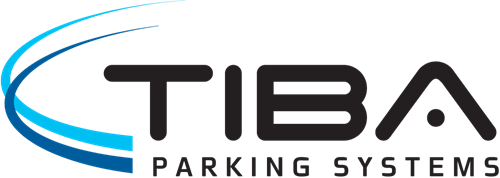Innovation: Narrow-band IoT - The Future of Smart Parking Systems
Worldsensing develops prototype based on cutting-edge technology
The Internet of Things (IoT) enables communication between machines, people and other assets by means of smart and low-power devices. It provides an opportunity to improve human welfare, as its impact on cities, energy and waste management and other fields, makes our world effectively smarter.
The main technologies IoT devices use to communicate with each other, such as GSM, 3G and Low-Power Wide-Area Networks (LPWAN), allow data-sharing in various application areas. Within the framework of the EU project Fastprk2, Worldsensing recently developed a new prototype implementing Narrow-band IoT (NB-IoT) technology, which is expected to have a significant impact in the IoT market in the near future.
Connectivity – The Hot Topic in IoT
IoT ecosystems rely on many different connectivity technologies, each of them covering specific needs and requirements. The issue of connectivity is one of the hot topics in the evolution and expansion of IoT applications.
These technologies can be positioned in the so-called “IoT Network Design Space”, which classifies them on a three-axis coordinate system representing key metrics for the practical implementation in specific use cases. These three parameters are:
- Data rate – which determines the amount and frequency of information that can be transmitted. There is a direct relationship between the data rate and the energy consumption of the IoT devices.
- Battery Life – a key point in many IoT deployments to guarantee the autonomy of the system. The battery lifespan clearly determines whether a technology is applicable to a specific use case or not. From a practical viewpoint, battery-powered IoT devices should last for approximately 10 years.
- Range – this parameter is directly linked to the distance across which information can be transmitted. There is an unequivocal trade-off between the range and the battery life.
In view of these considerations, Worldsensing focuses on Low-Power, Wide-Area Network (LPWAN) technologies, such as LoRa, to expand the use of reliable IoT deployments like those supporting the company´s current Smart Parking solution Fastprk. According to Gartner who identified the Top 10 Internet of Things Technologies for 2017 and 2018 in 2016, traditional cellular networks do not offer the right combination of technical features and operational cost for IoT applications needing wide-area coverage combined with relatively low bandwidth, good battery life, low hardware and operating cost, and high connection density. In contrast, LPWAN technologies, like LoRa and Sigfox, are the most competitive alternative at present time.
LPWAN Technology – Low Power & Long Range
Low power consumption is a strong requirement for almost 80% of the Low-Power Wide-Area Network (LPWAN)-based use cases, ranging from Smart Parking solutions to Smart Grid applications. These services often demand wide communication coverage with massive connection availability. LoRa, Sigfox and NB-IoT are LPWAN technologies with a clear potential in the wireless market, being capable of providing a huge amount of connections to IoT devices. In order to design and develop an IoT network that meets the requirements of the final users, it is necessary to understand the characteristics of each of these technologies.
LoRa and Sigfox – Today’s best communication technologies for Smart Parking solutions
LoRa and Sigfox are two wireless-based networking technologies already mature and commercially available, providing the following advantages:
- Reduced costs for data transmission,
- Long transmission distance in the km-range,
- Strong protection against interference and
- Low power consumption.
LoRa and Sigfox are widely used in Smart Parking applications like Fastprk: their communication modules are embedded in the sensors, which transmit the occupancy status of the parking spots, providing the necessary inputs to calculate the available parking opportunities in a certain area. The sensor information is wirelessly transferred to a gateway which finally forwards the information through the GPRS/3G/4G network to thus reach the parking management server.
Narrow-band IoT – A promising alternative for tomorrow
Narrow-band IoT has been identified for operators as the natural alternative to the mature Low-Power Wide-Area Network technologies. This communication technology offers a significant improvement with respect to typical cellular devices in terms of the power consumption, the system capacity and the spectrum efficiency, especially in deep coverage conditions. In addition, the battery lifespan of IoT devices running NB-IoT is expected to be greater than 10 years, fulfilling the requirements of most of the current applications. The new physical layer of the NB-IoT modules has been deliberately designed to meet the requirement of extended coverage – rural and deep interiors – while the devices themselves remain technologically simple.
Although NB-IoT is still in its infancy, the cost of the final communication modules is expected to be comparable to those for GSM/GPRS but with a lower underlying technology cost and room for costs reductions in the near future.
NB-IoT is not yet commercially available and it will not cover the capillarity requirements until the end of 2018. However, Worldsensing is already exploring the advantages of this cutting-edge technology and preparing to integrate it into their product portfolio in the coming months, with the aim of fast-tracking the maturation of the technology and its impact on the market.
Designing the future – the first Smart Parking prototype with Narrow-band IoT
The new generation of Smart Parking technology, which is being developed under the EU project Fastprk2, aspires to be a future-ready and marketable product. New communications technologies are being explored to improve the current communications options of Fastprk based on LoRa and Sigfox. In this context, the first prototypes based on NB-IoT, also termed as LTE Cat-NB1 have been successfully tested in two different sets of prototypes.
Prototype 1 at Mobile World Congress 2017
In early 2017, the first Fastprk2 prototype was presented at the world’s largest IoT conference: the Mobile World Congress in Barcelona. Using an Intel chipset introduced by Telit and a parking sensor based on magnetic detection, a proof-of-concept system was successfully developed and demonstrated by Worldsensing. The occupation events were routed through a Telefonica server.
Worldsensing’s Innovation Department customized the firmware of the Fastprk node to attain the desired NB-IoT functionalities in a robust way. Despite the obvious limitations of this first prototype, it helped Worldsensing capture the attention of various stakeholders and consolidated its position as a leader at the forefront of cutting-edge IoT companies.
Prototype 2 developed during Worldsensing’s Hack Week
As part of Worldsensing´s internal Hack Week, a team of Worldsensing’s engineers tested the integration of a Quectel BC95 module into a Fastprk node. The resulting prototype is robust and capable of transmitting the parking status through a UPD proxy in the Vodafone network.
Conclusion
The knowledge and experience gained through the development of the two Smart Parking prototypes based on Narrow-band IoT places Worldsensing in an excellent position to lead the implementation of this upcoming IoT technology in Smart Parking solutions. Despite the huge challenge of adapting a new, and not fully mature, technology to a commercial product like Fastprk, the first prototype successfully worked on an ongoing basis for four days.
In addition, NB-IoT modules have evolved remarkably over the past year, providing new functionalities and performance capacities. Nevertheless, there is still a lot of room for improvement, and Worldsensing will actively work to incorporate this technology in the company’s product portfolio during the coming years. This kind of prototyping and continual push to improvement clearly defines the innovative spirit of Worldsensing.
Check out the Fastprk2 website to keep up to date about the latest developments in NB-IoT.
The Fastprk2 innovation project has received funding from the European Union’s Horizon 2020 research and innovation program under the grant agreement No 726607.
About Worldsensing
Worldsensing is a widely recognized global IoT pioneer. Founded in 2008, the Barcelona-based technology provider delivers Operational Intelligence to traditional industries and cities. With over 70 employees and offices in Barcelona, London and Los Angeles, Worldsensing is globally active and has already conducted projects in over 50 countries across 5 continents.




Comments
There are no comments yet for this item
Join the discussion